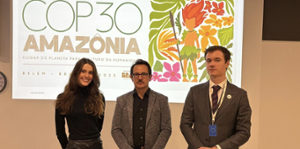When we think of the marine environment, we think of fishing, beaches or colorful reefs... And we know that the oceans are a treasure trove... but also an incredible source of inspiration for scientific research.
Drawing inspiration from the living to innovate
Did you know that "bio-inspiration" means looking to nature to create new technologies?
The arms of an octopus, diatoms or the skeleton of a seahorse are already inspiring architecture, robotics and medicine. Marine animals are also sources of molecules with medical properties (anti-pain, anti-cancer), and their biological capacities
(such as regeneration or resistance to stress) offer
promising avenues for human health.
An unusual sea anemone
Nematostella Vectensis is a small, translucent anemone (
1 to 3 cm), a cousin of coral, which lends itself to a wide range of experiments while having no impact on natural populations or the environment.It lives in estuaries, tolerates extreme conditions and can regenerate its entire body. It can also survive for over a year without eating, and can withstand doses of radiation fatal to humans.
Its secret? An organ called the mesentery, which triggers regeneration by activating stem cells.
And if it's split in two,two complete animals can be re-formed in just a few days thanks to total regeneration! This sea anemone is
a model of choice for fundamental biology and biomedical research.
Record longevity
Cultivated for 30 years in the
laboratory, Nematostella shows no signs of aging. Some of them could live to be 80 years old! Its longevity is explained by its
high resistance to stress and its capacity for cellular repair. It also shares genetic similarities with humans.
The ANTIAGE platform
To explore this potential, researchers at
the Institut de Recherche sur le Cancer et le Vieillissement de Nice (IRCAN), led by
Eric Rottinger, have developed the
ANTIAGE platform, dedicated to
the study of anemones and corals. Thanks to techniques such as
CrispR/Cas9 and
fluorescent proteins, they are able to visualize live regeneration mechanisms and test the role of certain genes. But before new therapeutic approaches can be applied to humans, we need to experiment on mouse models to validate their potential pro-regenerative role, and thus envisage new therapeutic approaches for healthy aging.
Thanks to Nematostella, researchers hope one day to push back the limits of aging in humans. Proof that even the smallest marine organisms can inspire the greatest hopes.




